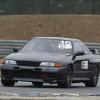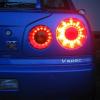Announcements
-
Similar Content
-
Latest Posts
-
By joshuaho96 · Posted
Pinout is different to my knowledge, but you should confirm to be sure. Also you will need to adjust the VQ table in Nistune to suit. I would still recommend sticking with recirculating BOVs, I'm not sure if the R35 card MAF will fully resolve stalling caused by reversion/throttle lift. -
What issues are those? Previous owner said it wants to stall sometimes. We did test drive and it was nice and smooth so it will be sporadic or idk. And if i just change MAF(the sensor to R35 version) it should be better? And as i asked...is it like "plug n play" with oem MAF from R34? This is a MAF from R35 right?
-
By joshuaho96 · Posted
Even with no BOV you will have issues unless the MAF is a hot film type like the R35 which has some design features to deal with reversion. Hot wire MAFs are very sensitive. -
So i just change the (whatever is inside ma original MAF and slide the R34 MAF (it is gonna fit right in? ) and somewhere on the hot side a BoV...i presume that would be vented to the atmo? I just "trying" to understand...maybe my mechanic would know this I would not mind(even prefer) to run stock BoV cuz it is way more than fine but i do not have that and only pipeing what is left is oem J pipe ... I will be running Blitz fmic(to fit oem one side style) and i gonna need custom pipes cuz i do not have rest of those pipes and hoses... But i am want standalone ECU. Only choice i have atm is Nistune...but that is not gonna cut it right?I dont know what Nistune can and cant do... I know you guys know Link and Haltech...but whatabout ECUmaster? I know guys in here run those but i literally do not know about that and do not know differences... Just know to take whatever "my" tuner can work on.
-






Recommended Posts
Create an account or sign in to comment
You need to be a member in order to leave a comment
Create an account
Sign up for a new account in our community. It's easy!
Register a new accountSign in
Already have an account? Sign in here.
Sign In Now